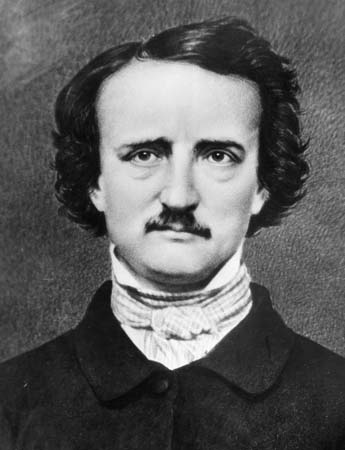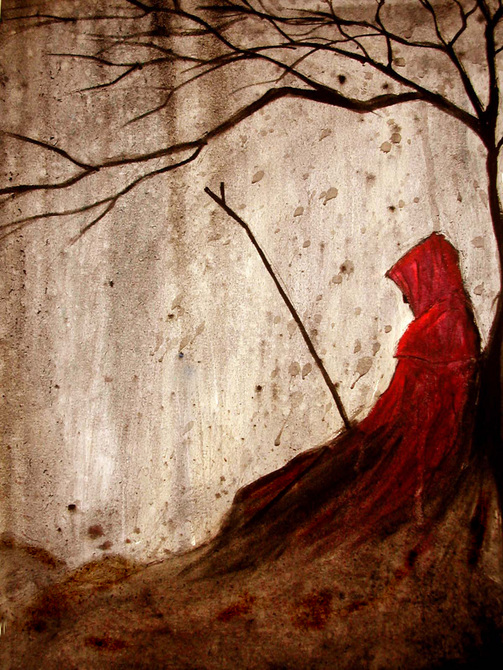Would anyone be interested in reading the Lord of the Rings after the Medieval Lit. class is over? There's another blog already made for it (from the failed try last year). I'd post what to read each week, then have a quiz at the end of the week (the quiz would be optional, and pretty easy). We would also be commenting on what we read each week. Also, if anybody wants to, we'll watch the movies after we finish each book. If you want to, let me know on here and I'll send you an e-mail invite to the blog (I'll need your e-mail address). Some of you are already on it, so let me know if you want to do it and I'll give you the address of the blog if you need it.
P.S. I'm not going to do it unless I've got a minimum of 4 people that want to do it and are actually going to read and comment (other than myself).
Monday, April 12, 2010
Sunday, January 17, 2010
Another Style...for example
A clock can be defined as an instrument, other than a watch, for measuring or indicating time, but in Edgar Allen Poe’s short story The Masque of Red Death, the clock is much more than that. The clock is the timepiece of man’s mortality, the very thing man fears.
Poe paints the clock ebony and places it in a chamber shrouded with velvet tapestries and scarlet stained glass windows. The revelers are unaware of the ticking of time, as they waltz the night away, until the clock strikes the hour. It is then that the orchestra ceases to play and the revelers stop their twirling, and “There was a brief disconcert of the whole gay company; and, while the chimes of the clock yet rang, it was observed that the giddiest grew pale, and the more aged and sedate passed their hands over their brows as if in confused reverie or meditation” (2). Once the toll ceases, the revelry begins again and the partygoers swear to not allow the chimes to have the same effect on them again.
The clock does strike again. It is the twelfth hour that man fears most. “And now was acknowledged the presence of the Red Death. He had come like a thief in the night. And one by one dropped the revelers in the blood-bedewed halls of their revel, and died in the despairing posture of his fall” (4). It was then and only then that the clock ceased its chiming. For just in our lives today, we cannot hide from our mortality. The clock still ticks until the very end.
Poe paints the clock ebony and places it in a chamber shrouded with velvet tapestries and scarlet stained glass windows. The revelers are unaware of the ticking of time, as they waltz the night away, until the clock strikes the hour. It is then that the orchestra ceases to play and the revelers stop their twirling, and “There was a brief disconcert of the whole gay company; and, while the chimes of the clock yet rang, it was observed that the giddiest grew pale, and the more aged and sedate passed their hands over their brows as if in confused reverie or meditation” (2). Once the toll ceases, the revelry begins again and the partygoers swear to not allow the chimes to have the same effect on them again.
The clock does strike again. It is the twelfth hour that man fears most. “And now was acknowledged the presence of the Red Death. He had come like a thief in the night. And one by one dropped the revelers in the blood-bedewed halls of their revel, and died in the despairing posture of his fall” (4). It was then and only then that the clock ceased its chiming. For just in our lives today, we cannot hide from our mortality. The clock still ticks until the very end.
Saturday, January 16, 2010
My essay on the symbol of the clock

“It was toward the close of the fifth or sixth month of his seclusion, and while the pestilence raged most furiously abroad, that the Prince Prospero entertained his thousand friends at a masked ball of the most unusual magnificence”
(1). The revelers in The Masque of the Red Death, shield themselves within the confines of the flamboyant halls of their arrogant prince, refusing to acknowledge that their fate might be the same as their fellow man. The orchestra plays louder than the fear in their minds, whirling the waltzers within the chambers until the distinct hour on the clock is rung. As with the masqueraders that night, Edgar Allen Poe uses the toll of the ebony clock to produce a feeling of impending doom in reader .
On the western wall of the chamber of death, the ebony clock stands. “At each lapse of an hour , the musicians of the orchestra were constrained to pause, momentarily, in their performance, to hearken to the sound; and thus the waltzers perforce ceased their evolutions; and there was a brief disconcert of the whole gay company; and while the chimes of the clock yet rang, it was observed that the giddiest grew pale, and the more aged and sedate passed their hands over their brows as if in confused reverie or meditation” (2). As the clock ceased its chiming, the revelers began again, swearing not to allow the chimes to repeat the same effect. After another hour, the clock struck again, “And the same disconcert and tremulousness and meditation as before” (2) fell upon them. Eventually the hour that produces fear in all, the stroke of midnight, chimes and the masque of death enters the room, bringing death to them all. It is then, and only then, that the bell stops tolling.
In his short story, The Masque of the Red Death, Poe touches the fear of death in all of us, which is felt even more acutely when dire circumstances occur. We all know the clock is ticking, but its presence becomes louder as we face the masked mummer. We know our day will come, that fate can’t be prevented, yet we still attempt to trick the clock that races toward our hour.
Let's start your paper...

Step one is to write your thesis statement. The thesis statement tells your reader what you are going to write about. It provides focus to the essay.
Your essay is going answer the question, "What effect does the Masquerader of Red Death have on the reader?" or, you could choose, "The Masquerader of Red Death symbolizes __________________________________."
Your thesis statement could fit into this format:
Poe uses the Masquerader of Red Death to _______________________________________.
The thesis statement is usually the last sentence in the 1st paragraph, but it can go elsewhere.
Now onto the introduction. There are several ways you can begin your introduction.
*Funnel: Give background information about the character and then introduce
your thesis.
*Ask a question: This has the effect of peaking the reader's interest.
*Begin with a quotation: this can be a quote from the story or may be a quote from elsewhere.
*Paint a descriptive picture.
The introduction should include:
*Identify the story's title and author (full name).
* Talk about the story's theme (message the author is trying to convey.
*Include your thesis statement.
Next we move on to the 2nd paragraph. This is where you will provide evidence for your thesis statement. Use quotes from the story as evidence.
When you've finished your 2nd paragraph it's time to move onto the conclusion. The conclusion should include:
*Revisit the thesis-make sure you've answered the question What effect does the Masquerader of Red Death have on the reader?
*You may want to apply it to how the reader's generation feels about death.
Literary Analysis paper

Hi everyone, here is the place where we will go over how to write your first "Literary Analysis Paper." This sounds a bit intimidating, but really isn't that difficulty if we break it into steps.
First step is to set aside a block of time to reread the story, so that you become more comfortable with it. You might want to write alongside each paragraph your impression of what happened. Pay special attention to the parts involving the phantom of death.
Then we'll begin the task of writing. Our first step as writers is to identify who our audience is. When writing Literary Analysis, you always assume your audience is one that is familiar with the book, so there is no need to summarize the plot.
Before we begin, keep in mind a couple of rules about writing literary analysis. First you must write in the present tense. Second, you must write a thesis statement (more on that later). Thirdly, you must back up your thesis statement with quotes from the story.
Let's break here to reread the story and then return for further instructions.
Saturday, December 26, 2009
Thursday, December 10, 2009
Short Stories for tomorrow....

Hi all, we'll be reading/listening to The Fir Tree by Hans Christian Anderson on Friday. Please print out the story here:
http://www.online-literature.com/hans_christian_andersen/971/
Please also print out The Snow Man by Anderson too:
http://hca.gilead.org.il/snow_man.html
We will be listening to The Fir Tree too, so if it's too much to print or if you're running low on ink, feel free to skip the printing on this one.
See you in the morning!
Ms. Michelle
Subscribe to:
Posts (Atom)

